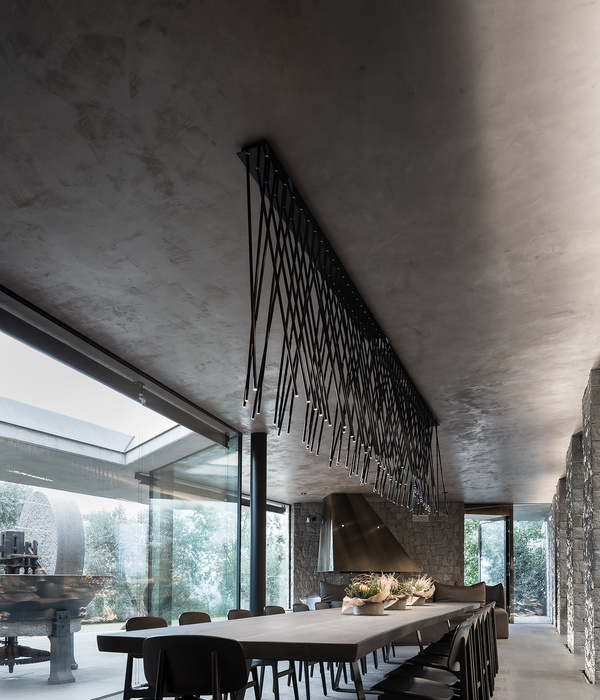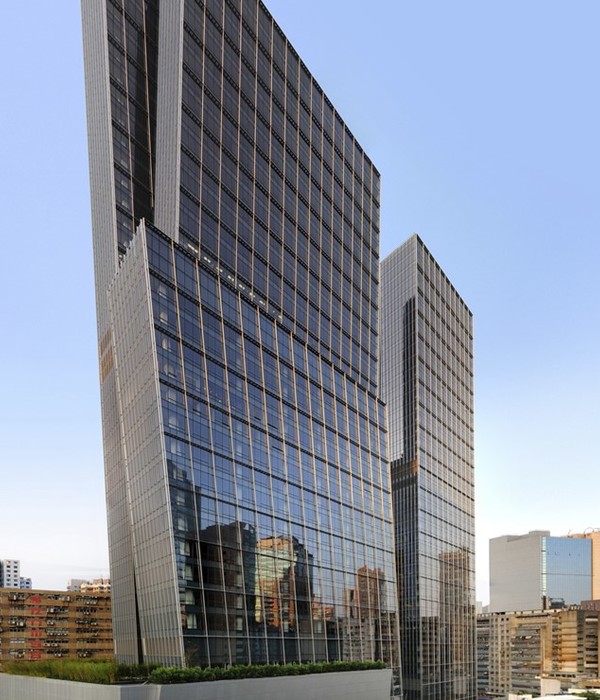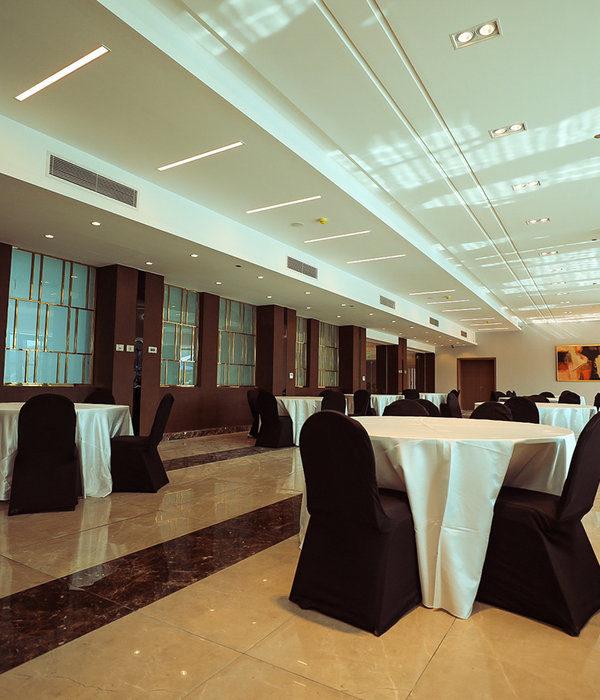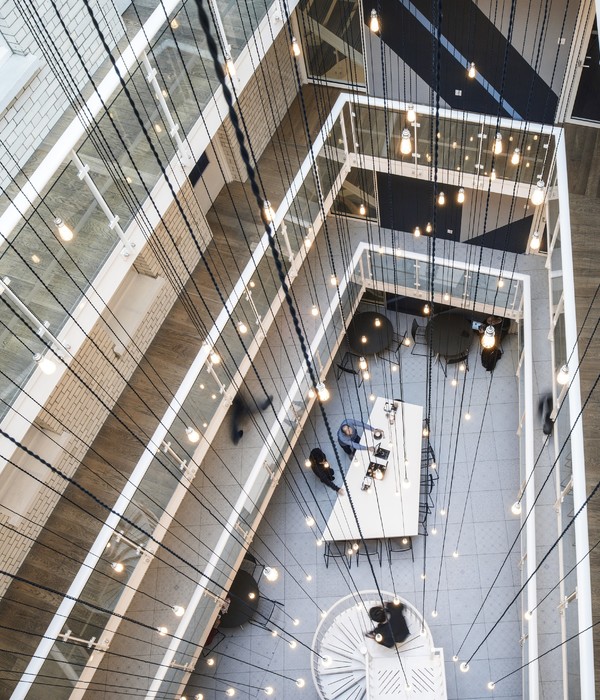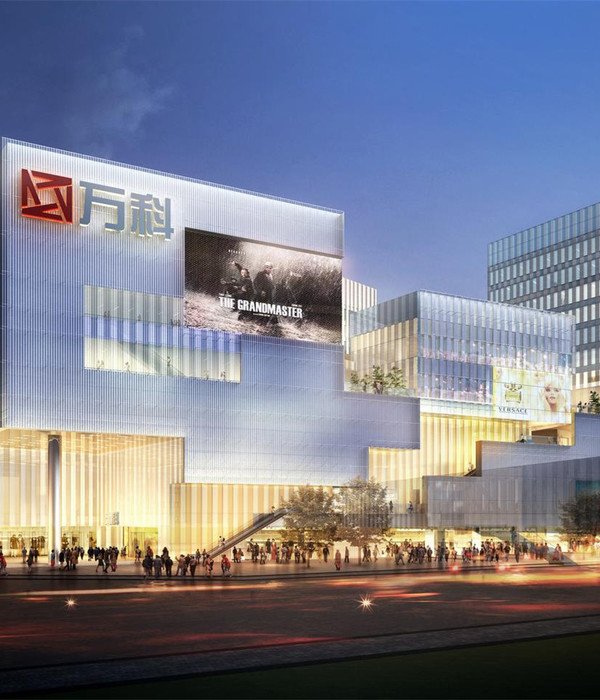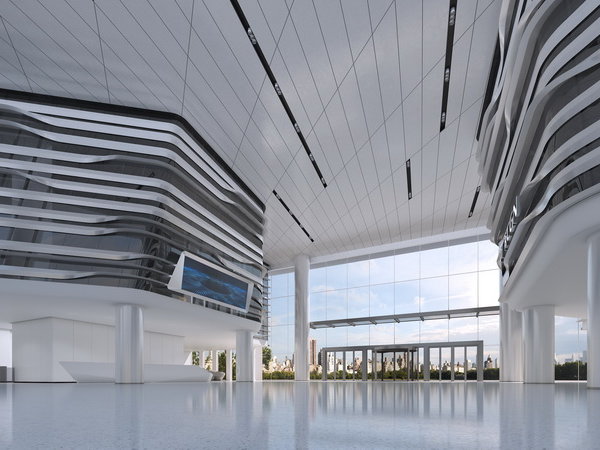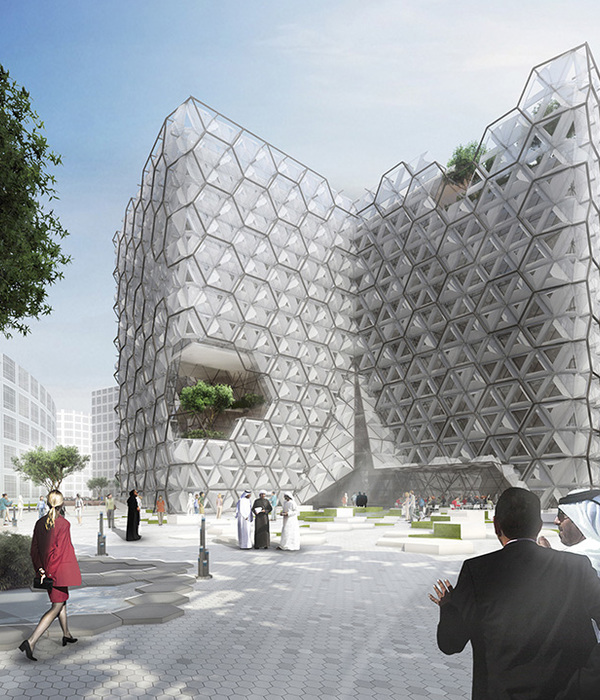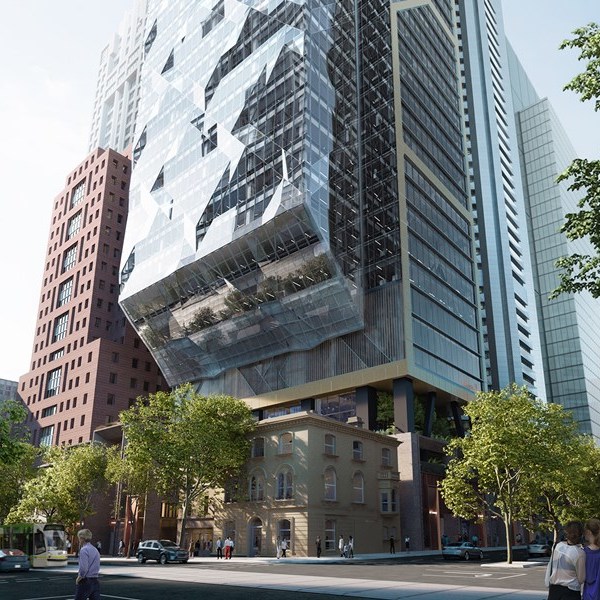- 项目名称:墨西哥TecniA生物技术研究所
- 设计方:Augusto QuijanoArquitectos
- 位置:墨西哥
- 分类:办公建筑
- 内容:实景照片
- 建筑公司:IDIMSA,de C.V.
- 图片:37张
- 摄影师:Roberto Cárdenas Cabello,Tamara Uribe
Mexico TecniA Biotechnology Institute
设计方:Augusto QuijanoArquitectos
位置:墨西哥
分类:办公建筑
内容:实景照片
建筑公司:IDIMSA, de C.V.
图片:37张
摄影师:Roberto Cárdenas Cabello, Tamara Uribe
这是由Augusto QuijanoArquitectos设计的TecniA生物技术研究所。该建筑位于Anahuac Mayab大学园区,为寻求替代可再生能源项目的企业用于研究和发展,因为在尤卡坦半岛有着非常好的风能和太阳能条件。首期阶段包括实验室和企业研究空间。该项目位于校园西端的预留用地,该建筑尽量减少对场地的影响。建筑纤薄而笔直,坐北朝南,以获得最佳的光线和通风。空间序列与几何形有助恢复总体规划的痕迹,并连接了开放空间和新建筑的流线,从而成为它们的延伸。整体仅由两个元素组成,实验室和公共空间是核心主体,而周边的流线有助将来更好地与周边建筑连系,并形成凉快而通风的环境。
译者:筑龙网艾比
From the architect. The Biotechnology building is within the Anahuac Mayab University campus, a building for research and development for companies seeking alternatives to renewable energy projects due to wind and solar radiation conditions that are particularly good in the Yucatan Peninsula, with very specific research needs within a dynamic international framework for innovation and development.The first stage houses laboratories and spaces for companies that are supported by research developed in Mayab University.
Located in the west end of the campus, in a site with the possibility of future growth, the building seeks to impact the space as little as possible. It is a straight, thin building, oriented north-south, to take in the best lighting and ventilation. The order and geometry seek to recover the trace marked by the Master Plan, and to relate the open space and circulation with the new building, which will be a continuation of these.
The composition is achieved with only two elements, laboratories and work spaces as a central body, and the perimeter circulations which enable future connections with other buildings, resulting in a cool and airy environment.The horizontal circulation not only articulates elements of the composition, but solves a number of continuities with the University buildings. It organizes the views and the space both to the outside and inside.
The new building is planned at the corner of the campus, creating a new facade which continues the existing route marked by the campus circulation. The articulation with the rest of the assembly is achieved with circulations. From a distance, it reads like a small building. The building is permeable to views, and is inserted into the campus lightly.
The Biotechnology Institute continues the same principle of correctly oriented linear buildings which seeks to capture the northern uniform light and to protect itself from southern sunlight. The new building has three levels. The scheme arises from differentiating the architectural program.Perimeter horizontal circulation links the different parts of the program and allows future adjustments and organizational changes without losing its order. The main staircase articulates all levels and is located in the central part of the building.
The ground floor houses laboratories, offices and support services such as cafeteria and meeting spaces such as a subdivisible auditorium. The first level houses spaces for small businesses and the last level houses spaces for the biggest companies.The internal organization of the buildings arises from the analysis of activities. It ranges from the most public to the less public. From the outside inwards. From the open to the closed.In relation to formal treatment, facades represent the organization without losing architectural unity, highlighting different functions. One language only: concrete brackets. The variation in the rhythm of both facades generates different forms depending on the sunlight and the views. More closed to the south, more open to the north.
The formal language is through exposed perpendicular brackets achieving a reading of the total mass and allowing ventilation and lighting. The formal treatment makes the project seem very light, allowing one to access naturally, emphasizing its public character. And its reading in perspective is perceived as a pyramid that is configured by a pair of inclined walls, referring to pre-Hispanic architecture.With the sloping walls it responds to offices and support areas, and with the protruding brackets in the opposite direction and vertically to the research area. This double reading clearly defines the architectural program and is a gesture of receiving and responding to the Campus.
At the west end, the auditorium is located on the ground floor, closed with a treatment based on a pair of inclined solid brackets, thus reflecting the formal treatment of the architectural program The slope of the east facade produces a garden space, which serves to protect from the sun and creates a fresh and airy feel inside. It takes the eastern dominating winds and directs them to the circulation. The levels generate garden terraces that open to the Campus and are contained by concrete prefabricated trusses that emphasize the geometry.The north facade is developed likewise but vertically. The structure is the formal language, achieving an architectural and constructive whole.
The basic intention in the construction aspect of the project was to design a modulation, allowing a rationalization of the construction process, reflected in an economy of resources used for the construction of the building.We proposed the use of exposed concrete due to its low maintenance, developed through prefabricated elements that provide speed of execution, and to prevent affecting the daily life of the University.The structural solution, is linked directly to the general composition of the building, this integration is established through rigorous modulation of the project every 90 cm. This achieves structural modules modules of 7.20 x 10.80 m.
For the selection of materials and finishes, we took into account the characteristics of the existing environment, so as to enable the integration of the building with the rest of the Campus.The criteria for the use of materials is to use them in a contemporary way, from the exposed concrete as the main expressive element and shaping the formal treatment of the building, they are related through the compositional module that is expressed in the facades. The module governs all elements both in elevation and in plan.The image arises from the very idea of representing the architecture of the campus, with a contemporary attitude and language, 30 years after the construction of the first classroom building at Mayab University.
墨西哥TecniA生物技术研究所外部实景图
墨西哥TecniA生物技术研究所外部局部实景图
墨西哥TecniA生物技术研究所外部夜景实景图
墨西哥TecniA生物技术研究所平面图
墨西哥TecniA生物技术研究所立面图
墨西哥TecniA生物技术研究所剖面图
{{item.text_origin}}


